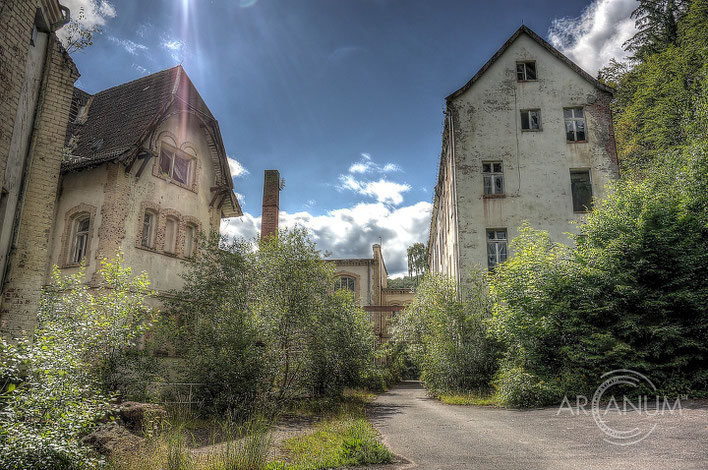Sanatorium Dr. K.
The rapid industrialization of Germany in the late 19th century led to an enormously
increased incidence of lung deseases in the big cities and industrial centers - a direct consequence of a phenomenon that today is known as smog.
The director of the North German Miner's Health Insurance and Pension Fund had the idea
to use a region of the Central German Uplands that was still very rural for building climatic health resorts
Construction of this sanatorium started in 1896 and in January 1898, the first patients
were admitted. The official opening followed in October, 1898. The number of patients that could be treated here was 100 in 1898 and was increased to 130 in 1908.
The sanatorium is made up of three main parts.
There is the main hospital building which has a concavely shaped southern front. Behind
it and connected over a passage is the service and office building. The third part is the living house of the medical director combined with a private sanatorium for ten patients.
Research let me find out that it was highly unusual at the time to have the senior
physician operate a private sanatorium and live on the premises, but the investors finally gave in and even financed the whole thing because Dr. K. had planned to pay for this part of the
sanatorium himself, and nobody wanted to going to have to buy it from him when he retired. So they came up with the money and built the small sanatorium.
This is actually a 2-in-1 sanatorium!




































